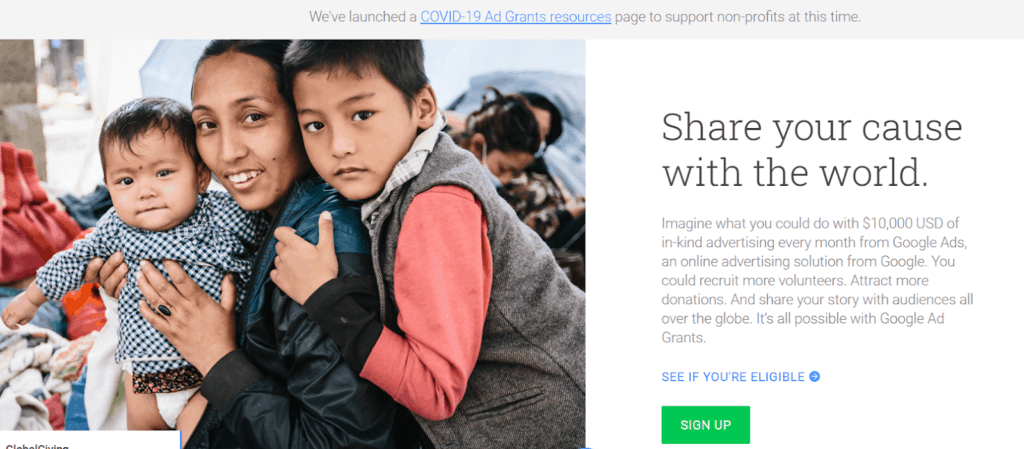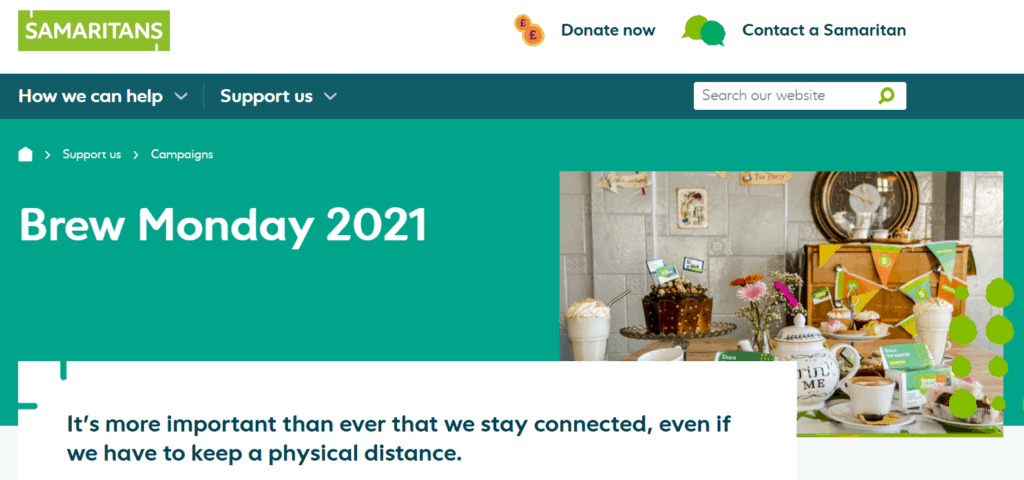If this last year has taught us anything it is that resistance to change is futile.
Relying on traditional methods in the hope that things will ‘go back to how they once were’ has never been a successful mindset to adopt, and this has been amplified by covid.
Charities which emerge from the global pandemic – research suggests as many as 10% in the UK might close – will have suffered but they will have learned lessons along the way.
The need for continual digital evolution is one of those.
This article helps charities understand how digital plays its part in that ongoing organisational evolution and focuses on these key areas:
- Charity web design & platform choice
- Income streams
- Marketing
- Service delivery
- Operations

Websites – it’s essential to choose the right platform
Nearly all charities have websites. Buy a domain, choose a platform, add content – it can be done in a matter of weeks, potentially even days.
But the crucial first step is often overlooked – selecting the right web platform for a charity’s specific needs. You see, not all web platforms are equal and the wrong choice at this stage can lead to frustration further down the road.
Often, charities will just go with WordPress. It’s the most well-known, and popular, and can be a great solution for charities needing something basic: a site where content can be updated regularly and small changes made easily.
However, it’s not the best option when a charity wants enhanced levels of functionality and flexibility. WordPress is actually a content management system (CMS) – originally designed for bloggers – with plug-ins used for expansion, for example into e-commerce or to accept donations.
These plug-ins require continual updates and this can cause conflict with one another leading to front-end errors which are often difficult to remedy, particularly without the technical expertise required.
Security can also be a significant issue as plug-ins can leave back doors open to your system when not updated. In 2018, 90% of all CMS-powered websites successfully hacked were WordPress sites.
Those numbers should generate a level of caution – do charities really want to run the risk of being hacked?
And if your charity has decided to make its website the centre point of a rich digital experience, a WordPress site is going to need a lot of plug-ins – and that’s if you can find the ones you require. This can lead to plug-in conflict – where two or more can’t work together – and then a realisation that you won’t be able to fulfil your ambitions.
The bottom line is that if you need a more complex digital solution, don’t choose WordPress.
So, what should bigger charities and those wanting more from their online presence turn to instead?
Our answer is simple: Django-Python.
Let’s break this down. Django is what is known as a web framework. This means it supports a range of web applications including services, resources and APIs and standardises how code is written, resulting in it being reusable and much easier for integration.
Python is the language used within the Django framework. The code is simple and flexible and is used for complex applications such as Instagram, Pinterest and web browser Mozilla Firefox.
The Django-Python combination is therefore ideal when you need your website to do more than display content.
Need to be set up to take advantage of existing and future technology? Choose Django-Python. Need the structure of your website to be separate from its content management system? Choose Django-Python.
Django is structured to create high-performing websites. The Django CMS is one of the plug-ins often used but, unlike WordPress, isn’t the structure itself.
You might be wondering why you would want your website structure and the CMS separated? The answer is one of the key benefits of Django.
Websites evolve. A few years into the future you will want to update your site. With Django, you can retain the core structure of the site – so no need for a lengthy round of fresh coding – but completely update the way content is presented, safe in the knowledge that your system is not going to break down.
Charity budgets are always tight so why pay for a new website from scratch when you don’t have to?
Think of it like this: WordPress is like having to find a plot of land to buy a new house when you want a change; Django is like having the right house already but giving it a fresh lick of paint and new fixtures and fittings when you want it updated.
Here at Giant Digital, we’ve written our own guide on why the Django-Python combination is more suited to larger charities and hopefully you’ll find it useful.
Income streams – expanding funding options
If you’re not bringing in income via digital means you’re missing out. It’s as simple as that.
There are a few ways to approach this. The most obvious is through online donations on your website.
While a number of charities already accept online donations – plug-ins are available for most web platforms – this functionality is being improved all the time.
Advanced donation platforms now allow your donors to not only pledge money but also to select the projects they want to support. Doing so provides them with peace of mind that they’re money is going to a cause close to their heart, not just into one pot.
One of the less obvious methods of taking donations is via corporate partners’ websites. If your charity is aligned with a brand which offers e-commerce there is an opportunity to allow customers to donate when checking out and buying products.
E-commerce platform Shopify, for example, allows its merchants to add a plug-in to accept customer donations by rounding their purchase up to the nearest pound or dollar or adding an amount. It also allows your partners to donate a fixed amount or percentage of each sale.
When it comes to e-commerce, this is a potential revenue stream in itself for charities which are well-versed in selling products in their own shops.
The fastest-growing e-commerce provider is Shopify because of its all-round solution. For small merchants it is incredibly easy to set-up and one of its most attractive features is that it handles all of the back-end heavy lifting for you. Therefore, it is perfect for charities who can’t afford the time to maintain the technical elements of an online store.
The Woocommerce plug-in is an alternative if you are running a WordPress site and can be a good solution if you have a handful of products to sell.
And the final point we’ll make on bringing in income is online fund-raising through events. When organising new campaigns it is imperative that digital is part of the mix.
Just take a look at how MacMillian promotes its famous coffee mornings. “Small or big, tea or coffee, socially distanced or virtual”.

Incorporating online channels into your campaign planning – and beyond just promoting physical events via social media – increases reach and allows participants to take part in a way they prefer. Why limit what campaigns can do for you?
Marketing – increase reach and income
The marketing options available via digital means are many – from email to Facebook, from search to TikTok. To get the most from the wealth of channels at your charity’s disposal, you need to be clear on how, and why, you are going to use them.
Your marketing strategy should make it clear who your audience is and what your charity’s position is. Competition is as fierce in the charity sector as it is elsewhere. It also needs to contain the objectives for your marketing.
An example might be that you want your marketing to make more people in the UK aware of child poverty in a particular region or country. By always asking the question ‘How are we going to achieve this?’ you can end up with a neat marketing plan for your activity.
Let’s take a look at how that can be played out across some digital channels.
Email – this will help you raise awareness among your existing database through interesting, educational content, case studies, unique research, surveys and more. Strong imagery and videos can be used to reinforce the message. Other digital channels can also be used to encourage people to sign up to your newsletter, therefore increasing the number of people who you can regularly communicate with.
Organic search – some charities hear of the magical powers of search engine optimisation (SEO) and believe they need to be targeting keywords and trying to appear higher in search results, but you have to be clear on what you are trying to achieve. The most important aspect is to ensure that your charity appears at the top of results when searching for you. This isn’t always the case but some technical fixes can normally resolve this.
But when it comes to other keywords or topics that you want to appear for in search results, you need to be very clear on what these are. Trying to appear on the first page for the search ‘UK charities’ may be very difficult and could cost you a lot of time, money and effort.
However, trying to appear for a regional term might be more achievable and, in our example, you might want to be appearing for ‘child poverty in xxx’. The number of searches might be small but they’ll be relevant to what you want to achieve.

Paid search – use Google Grants to appear in the paid search text ads area of Google and focus on your objective and message. Using the grant to try to appear for the search ‘UK charities’ again is unlikely to be as fruitful as appearing for ‘child poverty charity’ or similar.
Paid search can be a great way to spread the word of your cause and drive people to directly donate.
Social media – a great way to broaden your reach through creativity; but you still need to be clear on which channels you are going to use and how you are going to use them.
Facebook is the biggest so still has the potential to reach more people than other social media platforms. Encouraging friends and family to get involved in campaigns can work wonders for charities.
So, how could you spread the word about child poverty? How about informing people what little money families in the region have to live in and challenge them to try to get by? Putting the audience in other people’s shoes can be a great way of spreading a message beyond just writing a load of posts.
Twitter is faster-paced than Facebook and made the hashtag a common word in our vocabulary. The platform works well to spread the word in a relatively short space of time. For example, if research has shown that families are living on a small amount of money for a period of time, you could spread this message by asking users what they bought with #MyLast£1 or similar.
Driving home the stark difference between buying a bag of sweets and using the money to feed a family for a week is, again, more powerful than writing a set of tweets.
Instagram and TikTok are visual platforms, using images and videos, and are mostly used by younger audiences although don’t discount them if you are targeting an older demographic.
Emotive storytelling often resonates with audiences and videos of how donations have helped communities or simply the conditions some families are living in can be compelling viewing on these platforms.
Social media influencers are particularly strong on Instagram and TikTok and partnerships with those who believe in your cause can help spread the word to a whole new, large audience.
Service delivery – take your good work to more of those in need
When the covid pandemic hit the UK, a number of charities were immediately met with the challenge of how to deliver their vital services to those needing help.
While this huge shift in provision was a big test, those who have succeeded will now realise the big opportunity that digitisation provides.
Being able to deliver services digitally provides the people who need them with options – if it suits their individual situation then staying at home and still benefiting from support can be a literal life-saver.
Samaritans has offered support over the phone for years and implemented its Brew Monday at the start of 2021, encouraging people to reach out to a friend or family member for a virtual catch-up. It ties in with the charity’s cause and is a simple, but effective, adoption of technology.

The Children on the Edge charity has supported teachers in Bangladeshi refugee camps to deliver online classes to pupils while the Scouts had to move all of their sessions for children online and Chief Digital Office Lara Burns said she has “been genuinely blown away and truly inspired by the rapid digital transformation that is happening around us – and how it’s genuinely making things better”.
Operations – change is already here
The biggest change the covid pandemic has brought is to people’s working lives.
Flexible, remote working has been adopted by many and, after initial concerns, organisations have seen the benefits – for them and for the people within their teams.
It’s not for everyone – some have struggled not seeing colleagues – but for a lot of people it has meant that they’ve been able to carry out necessary aspects of their life while continuing to work. For parents, in particular, removing the requirement to be sitting at a desk in a city-centre office from 9am to 5.30pm brings a hugely positive change.
This can increase staff retention rates and opens up the possibility of some team members working more hours.
For charities paying out big sums of money on building or office leases, this new way of working can reduce those outgoings and, in all likelihood, a hybrid model of working is going to be the norm in the future.
This might mean sharing space with other organisations, hot-desking to provide people with face-to-face time one or two days per week or holding physical meetings in a range of venues.
Remote working brings operational challenges but, again, the various lockdowns have shown that these can be overcome.
Digital HR systems hold staff records, provide elements of self-serve and can automate processes such as arranging appraisal meetings.
Customer Relationship Management (CRM) platforms can hold supporter, user and volunteer data in one place and allow each of these to be contacted separately through one system. All of the information can be stored on the cloud so no need to be working at a certain computer on a particular desk.
Video conferencing through Zoom, Microsoft Teams, Google Meet and more has become the preferred communication channel for a lot of people although creative sessions are difficult to run in such a way so expect these to be held face-to-face.
Finance platforms such as Sage and Xero provide significant benefits beyond spreadsheets such as multiple user access and exportable reports.
The role of Chief Technology Officer, or similar, has become an important one in larger organisations and expect to see such a position becoming more commonplace in charities, particularly those of a certain size.
Summary
The digitisation of charities is now in full flow; returning the ways of 2019 is not an option for those charities wanting to develop and grow.
Digital has become a key component of service delivery, income streams and operational effectiveness.
Charities must adapt to survive.
About the author
Vimal Patel is co-founder of Giant Digital, a specialist agency which helps charities drive change through technology.



